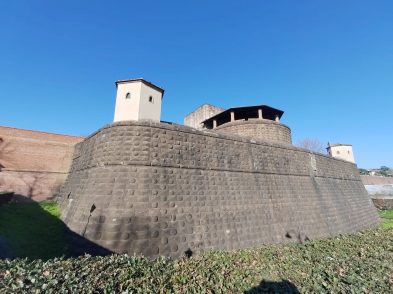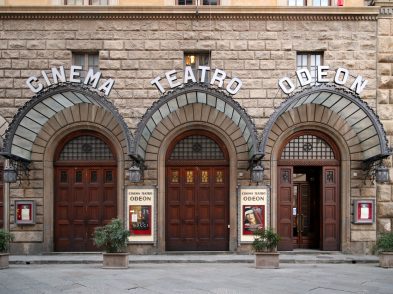 Every gem has its own history, but some have a fascinating story, often involving mystery and mayhem. This is certainly true of a diamond that found its way to Europe in the 15th century. Of Indian origin, the very large almond-shaped stone was pale yellow with hints of green. Weighing 137 carats, it was cut in a shield shape with 126 nine-sided facets that radiated gleaming light.
Every gem has its own history, but some have a fascinating story, often involving mystery and mayhem. This is certainly true of a diamond that found its way to Europe in the 15th century. Of Indian origin, the very large almond-shaped stone was pale yellow with hints of green. Weighing 137 carats, it was cut in a shield shape with 126 nine-sided facets that radiated gleaming light.
Called the ‘Florentine’, it eventually belonged to the Medicis, then to the grand dukes of Tuscany and finally the Austro-Hungarian emperors until, in the 20th century, it simply disappeared. Always surrounded by legend, since its disappearance it has been the subject of much speculation.
One of the most persistent legends about the Florentine, which was also called the Tuscan, the Grand Duke of Tuscany or the Austrian Yellow, is that, on its arrival on the Continent it was purchased by Charles the Bold (1433–77), the warrior duke of Burgundy. Vastly wealthy, Charles had an important collection of precious stones and customarily wore chosen pieces as amulets when going to war. The story goes that the gem he was wearing on January 6, 1477, while fighting the Lorrainers and the Swiss in the Battle of Nancy failed to protect him. He was killed. It took several days before his body was discovered. A peasant is said to have found the diamond nearby and, mistaking it for a pretty piece of glass, sold it for a florin. From then on, the bauble changed hands many times until it landed in the coffers of the Medicis.
Although a compelling tale, in the early 1920s art historian Nello Tarchiani’s extensive archival research revealed it to be pure fantasy. Instead, when the Portuguese took over a southern Indian kingdom where diamonds were mined, the gem was seized from the ruler of Vijayanagar (now Narsinga) by the governor of the Portuguese colony of Goa, Ludwig Castro, Count of Montesano, who gave it as a gift to his wife, Mexia de Noronha. In 1601, after long negotiations through Orazio Rucellai, the grand duke of Tuscany, Ferdinand de’ Medici (1549–1609) acquired the stone from Jesuits in Rome entrusted by the new owners with its sale. The diamond was still uncut, so in 1615, the grand duke’s son, Cosimo II, employed Pompeo Studentoli, a Venetian diamond cutter working in the city, to do the job.
In 1657, the French gem merchant and traveller Jean-Baptiste Tavernier not only recorded in his book Les Six Voyages de Jean Baptiste Tavernier that he had seen the stone then in Grand Duke Ferdinando II’s possession but he also included his drawing of it, noting it was the biggest diamond known in Europe at the time.
The love that the Medicis, in particular Cosimo the Elder and Lorenzo the Magnificent, had for diamonds is evident in their choice of decorative emblems, such as the four interwoven diamond rings with the motto ‘Semper’ in a mosaic on the floor of the Biblioteca Laurenziana in the San Lorenzo basilica complex. When, in 1740, the last of the Medicis, the Electress Palatine Anna Maria de’ Medici compiled an inventory of the 3,900 diamonds and other innumerable precious stones and pearls the family owned, the Florentine was on the list.
Although Anna Maria de’ Medici’s famed Family Pact had decreed that all Medici art and treasures collected over three centuries should remain in Florence after her death in 1743, the Florentine passed to the Empress Maria Teresa, the last of the Habsburg dynasty through her husband, Francis Stephen of Lorraine, later Francis I, Holy Roman Emperor and Grand Duke of Tuscany.
At this point the Florentine, now part of the imperial crown jewels, was in Vienna. Prior to 1918, it was displayed there at the Kunsthistorisches Museum, but after World War I, with the collapse of the Austro-Hungarian Empire, Charles I of Austria became the last emperor of Austria, the last king of Hungary, and the last monarch of the House of Habsburg-Lorraine.
Forced into exile with his family in Switzerland in 1919, he is believed to have taken the Florentine with him, despite attempts by the Italian government to have it and other Medici jewels returned.
At that point, the diamond’s trail vanishes. Some say it was stolen. Others say that it was sold to support the family’s new life in exile or to finance Charles’s attempts to reclaim the throne, the last of which, in Hungary, resulted in his forced removal to the Portuguese island of Madeira, where he died in 1922. There is no conclusive evidence for either, nor for the conjecture that the diamond was cut into smaller stones that occasionally appear on the international market. We shall probably never know the truth about the diamond’s fate, but, without doubt, as many myths about its disappearance as about its origin will continue to flourish.
We can, however, see copies of the legendary gem. One copy is at the National Science Museum in Milan. Another is mounted in the Cross of the Passion by Cosimo Merlini at the Opera del Duomo Museum in Florence.







